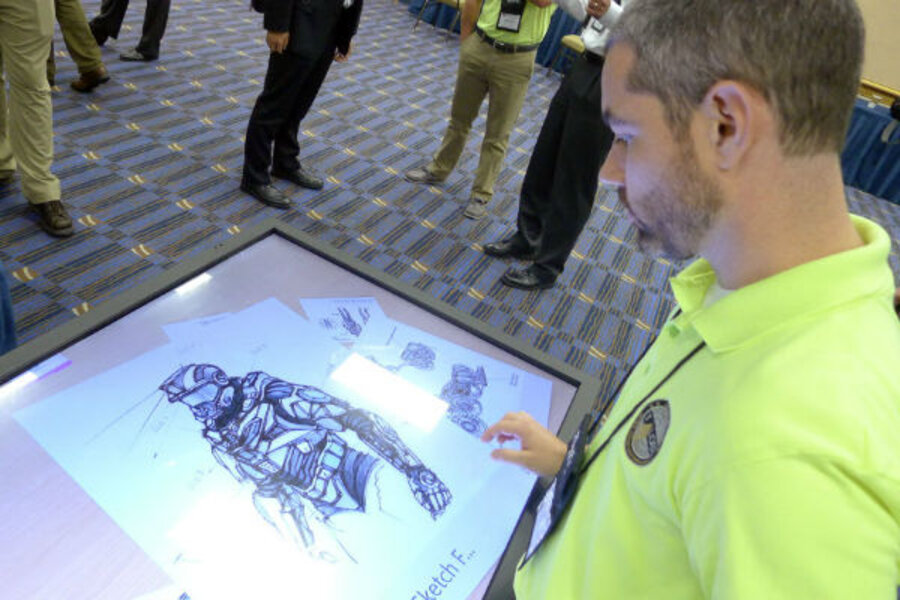Iron Man: Super suit trying to jump from the movie screen to the battlefield
Loading...
Since the release of the first “Iron Man” movie in 2008, little – and grown-up – boys all over America have tried to replicate the suit of armor that transforms the fictional Tony Stark into a superhero. In just a few short years, US special operations forces may get to try out the real deal.
Engineers at the Tactical Assault Light Operator Suit, or TALOS, project are developing a suit of armor that would provide superhuman ballistic protection and would offer the soldiers digitized information about their surroundings and battlefield conditions. Plans for the suit include a liquid armor exoskeleton, smart fabrics that stop bleeding, enhanced sensory capabilities, and Google-glass like visuals. (Superhuman strength and ability to fly not included.)
Officials at the US Special Operations Command at MacDill Air Force Base (SOCOM) in Tampa expect to see prototypes in June and hope to outfit high-risk units with the suits by 2018.
SOCOM’s deputy for acquisition, James Geurts, told the Associated Press that the futuristic technology could help reduce casualties in the field.
“We’ve lost a lot of guys to gunshot wounds and explosions,” he told AP. “If there’s anything I can do to more rapidly field technology, give better protection, better capability, any progress, I think we’ve done well.”
In May 2013, the military issued a broad request for technology demonstration submissions from private industry, individuals, government labs, academia, and research and development organizations, with the expectation that TALOS would be a technological collaboration between a wide range of institutions and individuals.
Several of the companies that answered that call are on hand in Tampa this week for the International Special Operations Forces Industry Conference. Some of the military’s top brass are expected to speak, including SOCOM's commander, Adm. William McRaven, who has been widely credited with initiating the project.
Admiral McRaven has been the voice of the project on promotional videos produced by SOCOM that call for everyone from “local garage tinkerers” to skilled engineers to join the effort.
“While I am committed to this, at the end of the day I need you in industry to figure out how you are going to partner with each other to do something that is right for America,” McRaven said in one video. “I am very committed to this because I’d like that last operator that we lost to be the last one that we ever lose in this fight or the fight of the future and I think we can get there.”
However, it is unlikely that the suit would become standard issue equipment, even for Special Operation Forces, according to TALOS’s civilian project manager, Michael Fieldson.
“We really don’t think everybody in SOF and certainly not everybody in the army would end up with one of these things,” Mr. Fieldson told the Center for a New American Security in October. “It would be cost-prohibitive.”
Decisions about who gets the new armor and who doesn’t are sure to be fraught with controversy.
Robert Scales, a former major general and two-star commandant of the US Army War College, told the Center for a New American Security that he would like to see this equipment issued to all ground services.
“A dead soldier from the 10th Mountain Division counts just as much as a dead special operator,” General Scales said.








